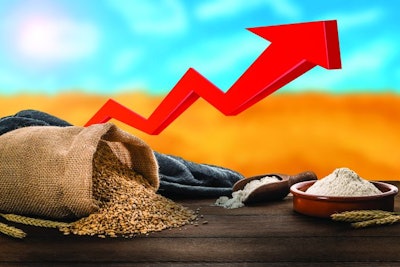
Strong demand for poultry meat, both in local and overseas markets would appear to offer numerous opportunities for the world’s poultry producers over the months ahead, but will they be able to benefit?
The latest report from Rabobank suggests that, while demand for poultry meat is expected to remain strong, operational difficulties will limit how the industry can respond. It forecasts growth to year end of 0.5-1%, below the 2.5% that might be expected in what it terms a normal year.
What’s driving growth?
Most economies have now reopened, with governments having adopted living with COVID-19 strategies and consumer behavior returning to normal. This has fueled demand across sectors, including for chicken meat. Demand for chicken meat has also grown due to rising food and other prices, as consumers look to reign in spending and are opting for the cheapest animal protein.
The bank notes that margins will remain positive but warns that producers must pay particular attention to controlling high input costs and other disruptions to remain competitive.
Feed and energy costs are higher than they have been for many years and are expected to remain high, while the impact of COVID-19 is yet to completely disappear. For some markets, highly pathogenic avian influenza (AI) pressures are the worst ever, while the ongoing crisis in Ukraine continues to impact commodity, energy and fertilizer prices, all of which are posing challenges.
Ongoing input difficulties
The cost of feed is not expected to rise further over the coming months, but it will remain high.
The industry has suffered sharply rising grain prices, which have more than doubled since the second quarter of 2020, and soymeal has risen by 60% over the period. While prices will remain high, they are, however, now below their second quarter 2022 peaks.
This slight decline is thought to be due to lower demand from some areas and a relatively strong outlook for Brazil’s second harvest and the next U.S. wheat and soybean crops. These positive harvest outlooks, however, are not expected to result in a marked difference to feed prices.
High feed costs are only one of the various issues that will continue to hold the industry back. Oil and gas prices have risen substantially, with an increase in gas prices particularly affecting European producers, due to their high dependence on Russian gas.
Distribution costs are now thought to be three or four times higher than over the same period last year, while labor is continuing to be an issue in many parts of the world. For how long costs remain elevated will depend on numerous factors, not least on what happens in Ukraine, Rabobank notes.
AI is also continuing to heavily impact the industry. Europe is struggling with its highest-pressure season ever, with over 53 million birds culled. Culls may have mainly occurred in layer and duck production, but significant numbers of broilers have also been culled.
The U.S. has also seen a significant wave of AI cases since February this year, with a rapid increase in culls over the subsequent months resulting in the loss of over 38 million birds.
Looking longer term, there are growing concerns over AI as the H5 strain seems to have become more endemic.

International trade
Demand for poultry meat in international markets will remain strong. Import demand has been healthy this year, with tight supplies and correspondingly high prices. The first quarter of this year, usually a low period for trade, reached its highest level ever, only slightly failing to overtake the highest trade quarter ever, the third quarter of 2018.
Illustrative of the ongoing strong demand for poultry meat, several countries have lifted import restrictions, while in others easing restrictions is under consideration as a way of reducing consumer price inflation. However, as is the case with feed grains, while some countries have eased restrictions, others are restricting exports.
International trade, however, is not without difficulties of its own. Numerous AI restrictions are in place, logistics costs are high and there is still limited container availability.
Brazil and the U.S. have been the main beneficiaries from strong overseas demand, while the European Union has lost market share due to AI export restrictions. Thailand may be recovering its position, yet it remains relatively expensive in international markets due to high local prices.
Global trade tends to be stronger in the second half of the year. More countries can be expected to lift import restrictions, while others that are already open to imports may look to import more as home production becomes more expensive.
Despite problems, global poultry market remains positive


















